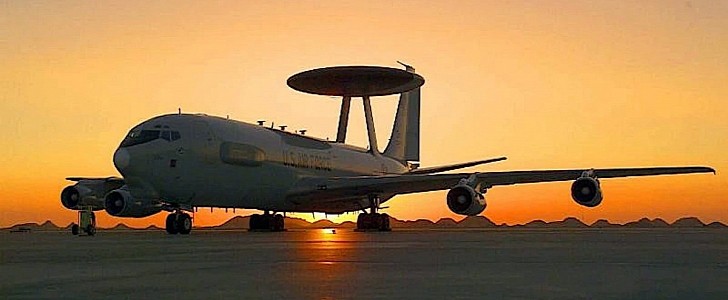The E-3 Sentry was born into this world in the 1970s, at a time when tensions between the East and the West were at their highest (present times not included). Built as a military offshoot of the Boeing 707 commercial airliner, it is meant to play the role of early warning and control platform.
Using a 30 feet (9 meters) in diameter dish, mounted on top of its fuselage and hiding a potent radar, but also a wide range of advanced systems, the plane is capable of detecting threats, but also fix, track and target them.
To be able to perform this task, the people flying inside the AWACS, as the plane is also known, need access to the most relevant data available, including something called electronic support measures (ESM). According to Lt. Col. Carly Sims, 605th Test and Evaluation Squadron commander, the process of updating the AWACS ESM “used to take days or months.” And “used” is the key word here, as one of the few such planes in operation (there are 31 of them in all) managed it all in a matter of minutes.
Flying over Texas, the Sentry collected electronic warfare information and sent it back to the ground using its satellite communications system. The 605th, in charge of the proof-of-concept test, processed and analyzed the data in about an hour, corrected the errors and sent back the updated file to the airplane, which was able to update its ESM database very rapidly.
“These are significant events,” said Col. Adam Shelton, 505th Test and Training Group commander, Hurlburt Field, Florida. “Our capability to detect, discover and defend ourselves against hostile threat systems is tied to our ability to quickly update software, especially mission data files, and there is a tactical demand to do so.”
The Air Force did not go into the specifics of this test or what it could mean for the future of the AWACS fleet.
To be able to perform this task, the people flying inside the AWACS, as the plane is also known, need access to the most relevant data available, including something called electronic support measures (ESM). According to Lt. Col. Carly Sims, 605th Test and Evaluation Squadron commander, the process of updating the AWACS ESM “used to take days or months.” And “used” is the key word here, as one of the few such planes in operation (there are 31 of them in all) managed it all in a matter of minutes.
Flying over Texas, the Sentry collected electronic warfare information and sent it back to the ground using its satellite communications system. The 605th, in charge of the proof-of-concept test, processed and analyzed the data in about an hour, corrected the errors and sent back the updated file to the airplane, which was able to update its ESM database very rapidly.
“These are significant events,” said Col. Adam Shelton, 505th Test and Training Group commander, Hurlburt Field, Florida. “Our capability to detect, discover and defend ourselves against hostile threat systems is tied to our ability to quickly update software, especially mission data files, and there is a tactical demand to do so.”
The Air Force did not go into the specifics of this test or what it could mean for the future of the AWACS fleet.






